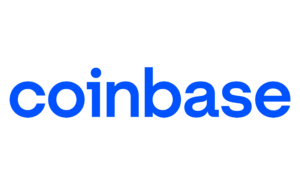Takeaways
- Market capitalization is the total outstanding shares multiplied by the price per share.
- Market capitalization helps investors bucket companies into risk categories.
- Market cap is a financial metric that categorizes investor’s perception of a company.
- There are five major types of market cap companies, each with its unique profile.
- Part of a diversified portfolio is investing across the spectrum of market cap companies.
Some of the links in this article are from advertising partners of Smart Money, which does not influence our evaluations or recommendations. We work to provide you with accurate and reliable information. Our opinions are our own.
Part of investing in stocks means understanding the language of business and investing. Understanding specific financial metrics can be the difference between making a good or bad investment as a beginner investor. One of the terms commonly used by stock investors is market capitalization. Here’s what you need to know.
What is Market Capitalization?
Market capitalization is the total outstanding shares of a company multiplied by the price per share. Market capitalization, or market cap, is a commonly used financial term by investors, media, and portfolio managers to help categorize publicly traded companies listed on stock exchanges like the Nasdaq or NYSE. Some stock exchanges won’t let companies with low market caps trade on their exchange.
For example, if a company has 50,000,000 shares outstanding and the current market price per share is $200, the company has a market cap of $1,000,000,000. This billion-dollar company could be a steel company, a clean energy company, or a pharmaceutical company. Market capitalization is industry, sector, and geographically agnostic.
Why Does Market Capitalization Matter?
Market capitalization gives investors a quick proxy for the size and scope of a business’s operations, anticipated growth, and stability. Market cap is generally understood as the measure of how “big” a company is, and the larger the company, the less perceived risk there is of investing in its stock.
All stock investments come with investment risk, but larger, more well-established companies have a different risk profile than smaller companies. That is because large-cap companies tend to have better access to raising capital through stock offerings or issuing bonds, more mature and diversified business models, and are generally revenue-producing companies.
Stock indexes, like the S&P 500 or Dow Jones, use market cap to buck companies. To be eligible for the S&P 500, companies must have a market cap of $12.7 billion or greater [1]. Companies can fall out of the S&P 500 if their market capitalization erodes.
Five Tiers of Market Capitalization
Below are the five tiers of market cap that investors monitor. It is important to note that the threshold between levels is not precisely defined, but here we use the categories as defined by the National Investor Relations Institute.
Professional mutual fund and exchange-traded fund managers may use slightly different definitions, and stock indexes can also have amended definitions. Additionally, companies can move in and out of tiers based on their performances and fluctuations in stock price. Here are the five tiers of market capitalization:
Get Smart With Your Money
Fresh weekly articles delivered straight to your inbox.
Enter your name and email for free tips and tricks.

Mega Capitalization Companies
Mega-cap companies are generally household names. These companies have matured to the point where they produce billions of dollars in revenue and are extremely profitable. Stable revenue and growth make mega-cap companies attractive to investors because they are more predictable than smaller companies and often provide the benefit of dividend payments.
Size: Greater than $25 billion
Best For: Beginner investors, retirement investing, and dividend investors.
Mega-cap companies are like the cargo liners of the stock market. You probably already use some of their products or services. Here is a quick list of some popular mega-cap companies.
- Apple
- Costco
- Intel
- Microsoft
- Visa
Many online stock brokerage accounts offer research portals and reports to help you evaluate these companies. Mutual funds and ETFs have specific offerings that target large-cap companies.
Interested in Dividend Income? Read More -> What are Dividend Aristocrats?
Large Capitalization Companies
Large-cap companies are not as big as mega-cap companies, but they offer investors the benefit of potential growth into the mega-cap category. These companies have generally been around for a decade and dominate their industry or sector niche.
Size: $10 billion to $25 billion
Best For: Beginner investors, retirement investing, and passive income investors.
These companies usually have a tangible competitive moat (superior brand, product offering, etc.). Here is a quick list of some popular large-cap companies.
- CarMax
- Best Buy
- Expedia
- Robinhood
- Zillow
If you are investing for retirement with a 401(k) plan, you are probably already invested in a target date fund or mutual fund with an investment in at least one large-cap company. Depending on where you are in your investment journey, investing in these companies could be a central part of your strategy.
Learn More -> What is a Bull Market?

Acorns Website
Acorns Investing App
Intro Offer: $20 Bonus Investment
Recommended For: Beginner Investors
Annual Fee: N/A
Smart Money Rating: 5/5
Medium Capitalization Companies
Mid-cap companies can offer investors the best in both worlds. These companies have established business models, are generally revenue-generating, and are executing to become the top players in their space.
Size: $2 billion to $10 billion
Best For: Growth investors and medium-risk investments
Mid-cap companies are well known on a national level but have yet to break out into international markets. They are generally on the cusp of a transition, and investors flock to them for their growth potential. Here is a quick list of some popular medium-cap companies.
- Crocs
- DropBox
- Etsy
- Roku
- Texas Roadhouse
Learn More -> How to Start Dollar-Cost Averaging
Small Capitalization Companies
Small-cap companies are typically developing and growing companies. Many of these companies have recently gone public and are trying to establish a foothold in their industry or sector. To do that, unless they are growing only with their cash flow, they conduct stock offerings to secure the funding to continue their growth and development curve.
Size: $250 million to $2 billion
Best For: Growth investors and medium/high-risk investments
Here is a quick list of some popular large-cap companies.
- GoPro
- Pitney Bowes
- Redfin
- Rent the Runway
- Sweetgreen
Investors like small-cap stocks because they offer the possibility of high returns and outsized performance. Given the right business catalyst and technology, a small-cap company can quickly soar through multiple tiers of market cap.
Read More -> Investment Strategies for Beginner Investors
Micro Capitalization Companies
If you are looking for the riskiest capitalization class, welcome to micro-cap companies. Companies in this category are either at an extremely early stage, have a failed business model, or have fallen from grace in the eyes of investors. As an investor, you want to ensure these companies have a viable financial future. If a micro-cap company experiences success, it is usually quite dramatic and generates serious investment returns.
Size: Less than $250 million
Best For: Industry experts, growth investors, and speculative/high-risk investments
However, it can be tough to climb out of the micro-cap company size because companies tend to receive less favorable financing terms and are often in a “prove it” stage or a “turnaround” story. Some of these companies are essentially shells of companies and will merge with a private company looking to join the public through a reverse merger.
Get Smart -> How to Spot a Bear Market
What is the Best Market Cap for Stocks?
The best market cap is the one that marries with your investment portfolio and financial goals. You can craft a well-diversified portfolio of stocks from across the market cap spectrum to inject and dial back investment risk based on your desired rate of return.
Depending on the investment time horizon, small-cap companies can outperform larger-cap companies. However, small-cap companies come with more risk. Consult with a financial advisor or your financial plan to see how to construct the best portfolio for you.

Coinbase Website
Coinbase
Smart Money Rating: 4.5/5
Best For: Investing in Crypto
Bonus Offer: Buy Bitcoin from just $10
How Market Cap Affects Stock Prices
A company’s market capitalization is a byproduct of its share price movement and number of issued shares. Market cap does not drive the share price.
However, companies entering a new market cap tier could experience more liquidity as money managers investing in target-date funds, ETFs, or mutual funds may have specific market cap minimum requirements. If a company crosses the chasm into an investable market cap, they could experience new investments from these funds.
Factors affecting stock price include company revenues, product pipeline, industry performance, degree of competitive moat, and growth prospects. Market cap can reflect how investors perceive these variables for a business.
Smart Summary
A well-designed investment portfolio involves balancing risk, reward, and investment timeline. Part of that engineering involves owning stocks in companies across industries, sectors, geographies, and market capitalization categories. Investing in companies with different market caps should be one tool in your toolkit, but certainly not the only one. Whether you want financial independence or a nice retirement nest egg, understanding your investments is essential for success.
Frequently Asked Questions
The Securities and Exchange Commission regulates U.S. stock exchanges, publicly traded companies, and other forms of capital raising, like bonds.
From a risk perspective, investing in small and micro-cap companies can be a great idea if these investments fit into your portfolio correctly. Alternatively, you could invest in these companies because you believe in their product or mission or have an informational advantage (like being a Ph.D. investing in a biotechnology company).
The two variables in market cap are the stock price and the number of outstanding shares. If the stock price moves that will change the market cap. Another way it can move is if the number of shares outstanding can increase. This could happen by an investor exercising warrants, a security that gives investors the right to buy stock at a specific price. Alternatively, if a company issued new shares to raise money, this could alter the market cap.










